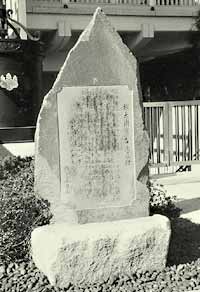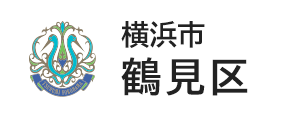- Yokohama-shi Top Page
- Tsurumi Ward Top Page
- Introduction of the ward
- Overview of Tsurumi Ward
- Booklet "Tsurumi, this town, this person"
- International exchange in Tsurumi
The text is from here.
International exchange in Tsurumi
Last updated on November 1, 2018.
※The contents of the publication are excerpted from the booklet “Tsurumiko Town Konoto” published in March 1999. This booklet was edited by the "Tsurumiko Town Kono People" editorial committee by inhabitants of a ward, and the "Iimachi Tsurumi Movement Promotion Committee" issued it. .
Therefore, please note that the content may differ from the current one.
The second most foreigner ward in Yokohama

<Pre-event of "Latin America Festival">
2021 Koreans, 1339 Brazilians, 868 Chinese, 473 Peruvians, 469 Filipinos, and 860 others (as of January 31, 1999). Of the approximately 250,000 residents of Tsurumi, 6,030 foreign registrants, 2.4% of residents (one out of 42) are foreigners, and Tsurumi Ward is the second largest foreigner ward in Yokohama after Naka Ward.
Migrants who have moved since ancient times
In the middle and late Yayoi period, in the Tsurumi River and Hayabuchi River basin, moat settlements and square tombs (Otsuka, Toshikatsudo archeological site, designated by the country), which are thought to have been developed while drawing the genealogy of Korean rural culture, have been found. I have. There is also a mountain called Komayama in Oiso-cho. It is reported that a visitor from Koguryeo, Korea, landed on this mountain as a landmark and established it. Hadano City is also said to have been inhabited by the clan of Hata, a male tribe of immigrants. From the 4th century to the 8th century of Nara period, it seems that the migration of people from the continent, especially from Koguryeo, Kudara and Silla, and the spread of various cultures were repeated many times.
The Beginning of International Exchange
In 1859 (1859), Yokohama Port opened, and foreigners settled in Yokohama. However, the differences in foreign cultures and customs and language barriers were too large, and in 1862 (1862), an unfortunate incident occurred in which U.K. merchants who tried to cross the Feudal lord's procession were killed. This "raw wheat incident" that occurred in the cold village began to cause the Satsu British War and accelerated the opening of the country. It was an opportunity to influence the later Meiji Restoration.
The origin of humanism

<Common Monument of Chief Tsuneyoshi Okawa erected on the grounds of Tojoji Temple>
After the annexation of Japan and South Korea in 1910 (1910), many Koreans and Koreans moved to Japan. In Taisho, reclaiming the coastal area of Tsurumi began, and around 1920, during the formation of the Keihin Industrial Zone, many workers from the Korean Peninsula and Okinawa began to live in the Shiota area.
At that time, however, discrimination against foreigners was persistent, and during the Great Kanto Earthquake, a hoax of Korean riot flowed, causing the killing of Koreans. At this time, Tsuneyoshi Okawa, Chief of Tsurumi Police at that time, saved many Koreans with his body, and no one died. Mr. Okawa's actions were exactly the starting point of humanism.
Later in the year, a memorial monument honoring his virtue was erected at Tojoji Temple (3-chome Shiodacho) in Bodaiji Temple of the Okawa family. The visitors are still constant.
Inquiries to this page
Tsurumi Ward General Affairs Department Ward Administration Promotion Division
Phone: 045-510-1680
Phone: 045-510-1680
Fax: 045-510-1891
E-Mail address [email protected]
Page ID: 644-564-254













